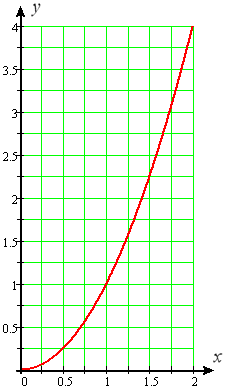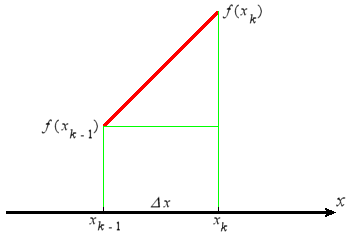Chapter 8
Integral Calculus and Its Uses
Project 1: Length of a Curve
Length of a Parabolic Curve
 |
In this project we will examine the use of integration to calculate the length of a curve. To have a particular curve in mind, consider the parabolic arc whose equation is \(y=x^2\) for \(x\) ranging from \(0\) to \(2\), as shown in Figure P1.
- Estimate the length of the curve in Figure P1, assuming that lengths are measured in inches, and each block in the grid is \(1/4\) inch on each side. You may estimate by "eyeballing," or you may use a ruler on your screen. Record your estimate to serve as a check on your later calculation.
Now we think of Figure P1 as the graph of a function, \(f(x)=x^2\) for \(0 \leq x \leq 2\). Suppose we subdivide the interval \([0,2]\) into \(n\) equal parts, each of width \(\Delta x = 2/n\). (Figure P1 displays the case of \(n=8\).) As usual, we denote the partition points by \(x_0, x_1, ..., x_{n-1}, x_n\). Assume that \(n\) is large enough that the portion of the curve in any one subinterval is essentially a straight line. (See Figure P2.)

Figure P2 Line segment approximating a curve between two points
- Explain why the length of the portion of the curve between \(x_{k-1}\) and \(x_k\) can be approximated by
- Show that the approximation in step 2 leads to this integral formula for the length of the curve:
Length of curve |
|
| . |
- Evaluate the integral in step 3 numerically, using any of the following: an integral key on your calculator, a numerical method from Section 8.3, or an online calculation service. Compare your result with your estimate in step 1 to make sure the numerical result is reasonable. (If you haven't made any mistake in calculating the integral, its value should be much closer to the true length than your estimate.)

